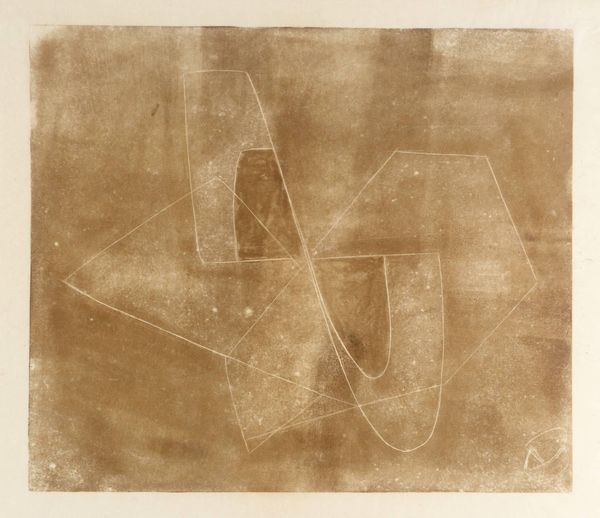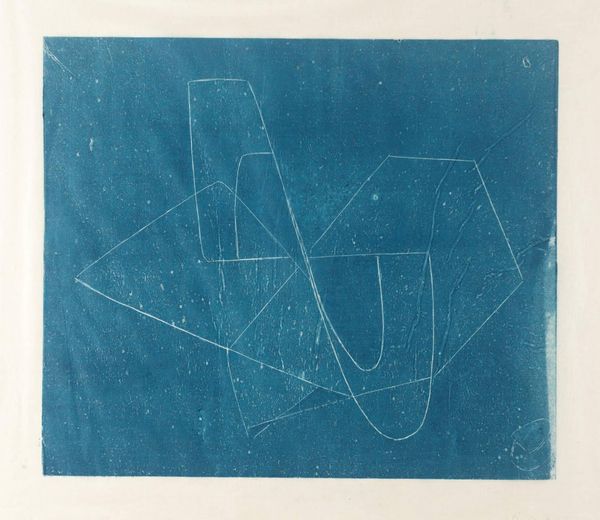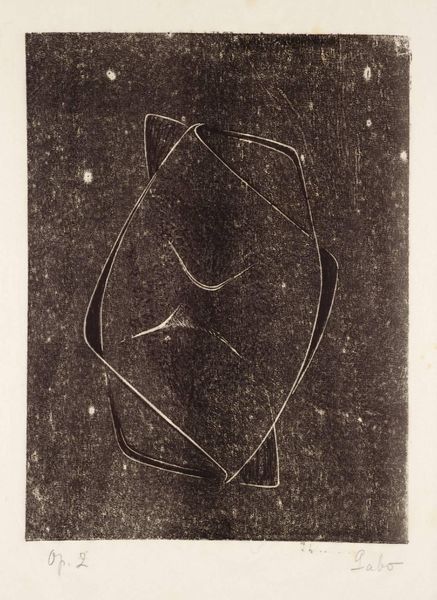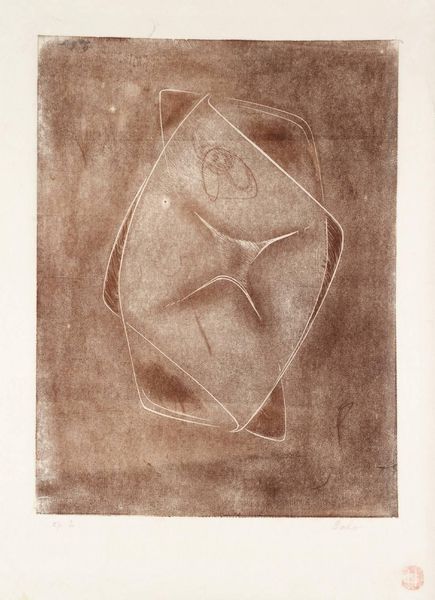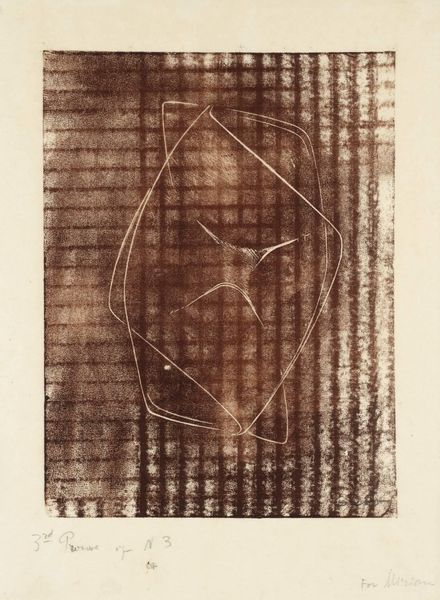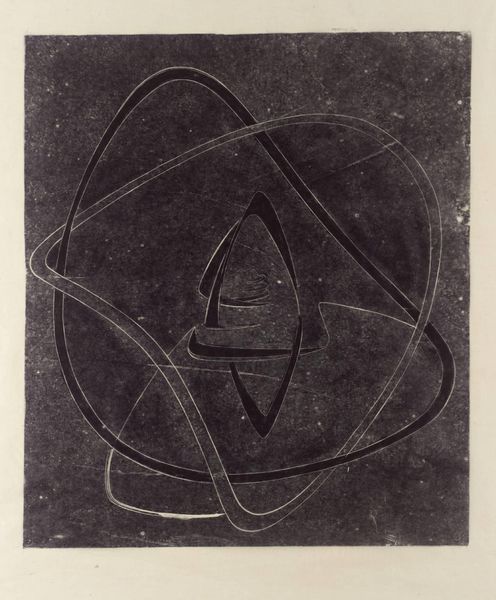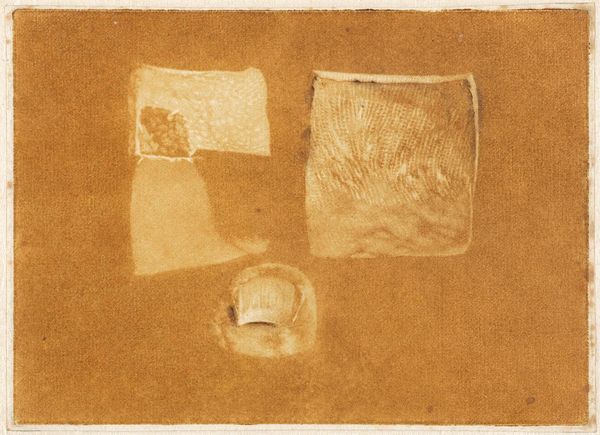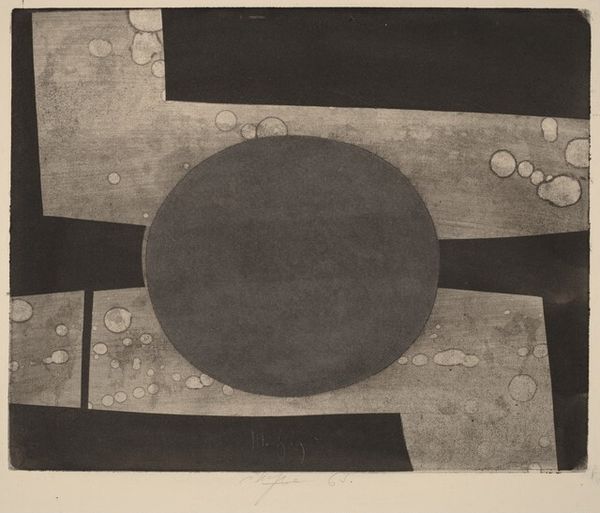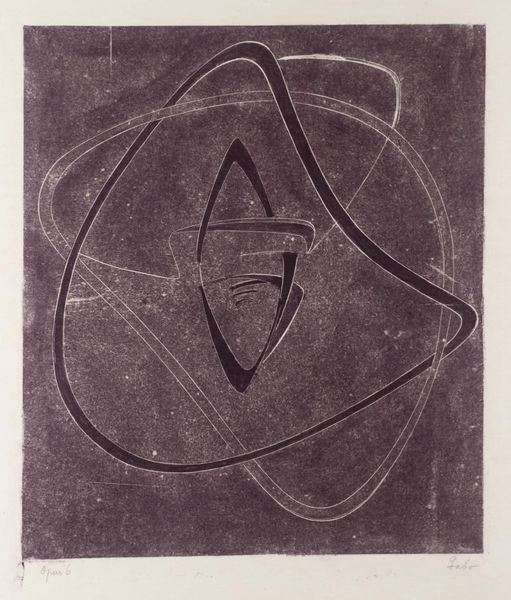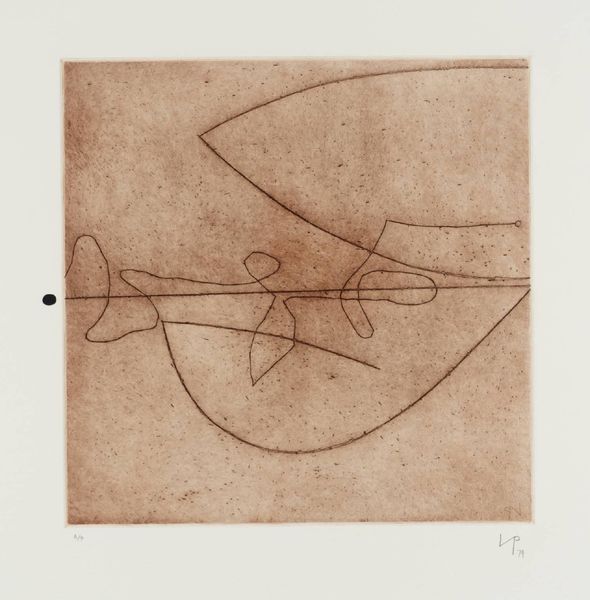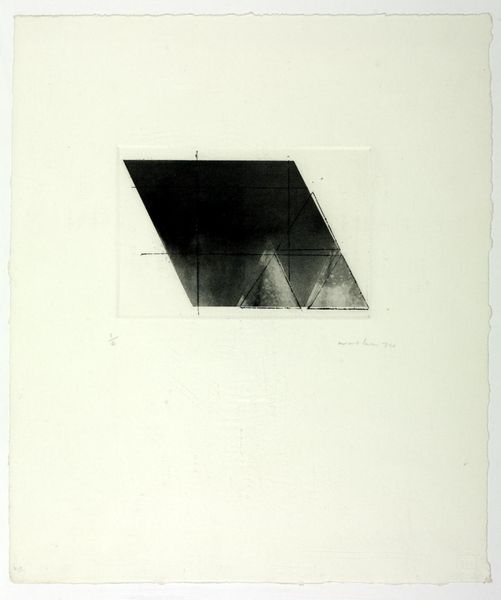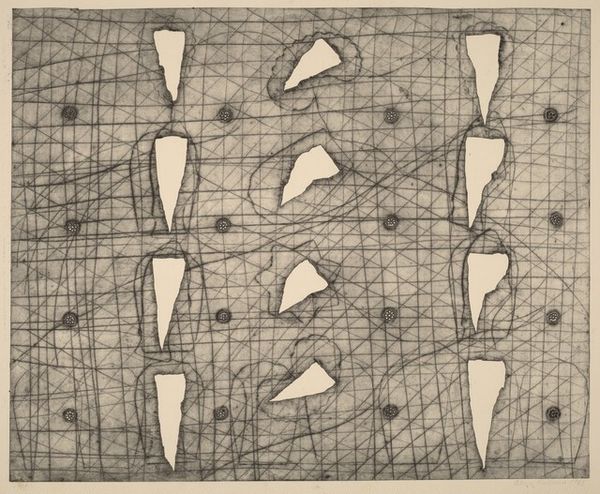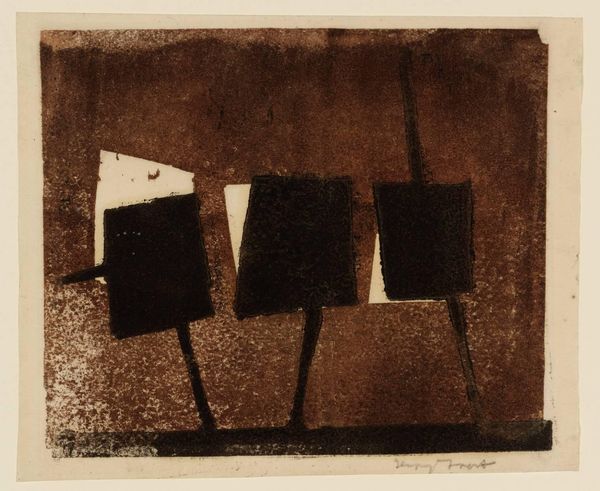
Dimensions: image: 305 x 356 mm
Copyright: The Work of Naum Gabo © Nina & Graham Williams/Tate, London 2014 | CC-BY-NC-ND 4.0 DEED, Photo: Tate
Curator: This is Naum Gabo’s "Opus 10," part of the Tate Collections. I'm immediately struck by the use of geometric forms. Editor: I'm getting a somewhat sepia-toned, vintage feel from it. The shapes seem to be layered, almost suspended. Curator: Gabo, deeply involved in Constructivism, sought to express modern industrial society through art. His brother even coined the term “Constructivism.” Editor: The intersection of these shapes, the positive and negative space, it feels like it's questioning solid forms and their relation to the world around them. Curator: Absolutely. Gabo rejected the traditional mass of sculpture, aiming for transparency and dynamism, mirroring the rapidly changing world. Editor: Thinking about that historical moment, with the rise of industry and revolutionary ideas, this work becomes even more poignant as a challenge to the status quo. What do you think, does it still resonate today? Curator: It remains relevant as a testament to art's ability to reflect and even shape societal shifts. It's a powerful visual articulation of progress and change. Editor: I agree. It makes you think about how the shapes in our own lives intersect.
Comments
Join the conversation
Join millions of artists and users on Artera today and experience the ultimate creative platform.
tate 8 months ago
⋮
In 1935 the Russian-born artist Naum Gabo, a pioneer of abstraction, arrived in England as a refugee. He influenced the development of Modernism in the 1930s and 1940s and was associated with the artists Ben Nicholson and Barbara Hepworth, his neighbours in the fishing village of St Ives during the Second World War. After the war he moved to the USA. There are strong holdings of Gabo's work in the Collection as a result of his stay in England and of his friendship with a previous Tate Director, Sir Norman Reid. Gabo's celebrated geometric constructions (see Archive display) examine the object in space. These wood engravings reflect his sculptural concerns in a two-dimensional format. Gallery label, August 2004
